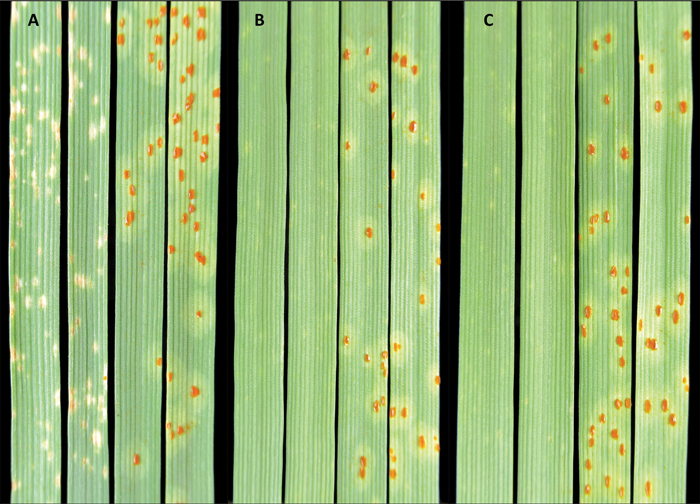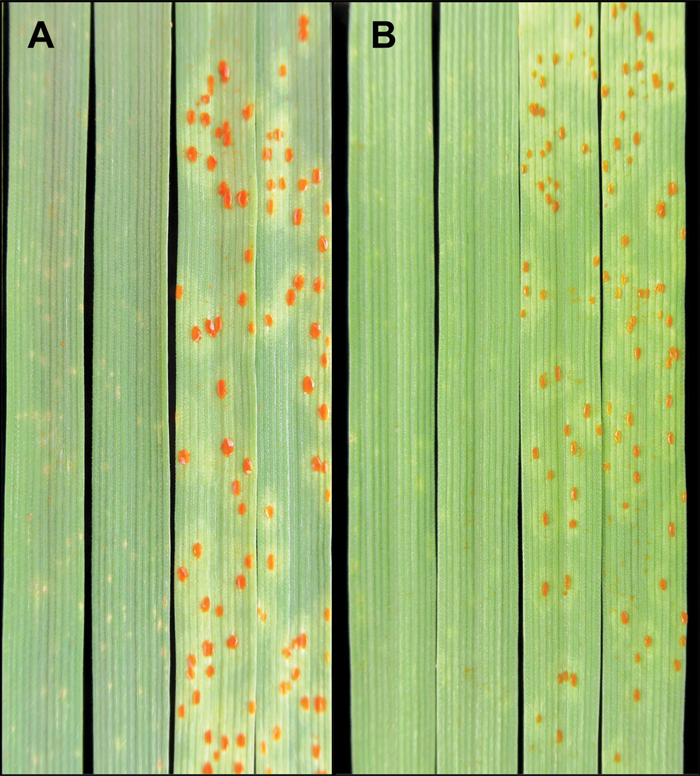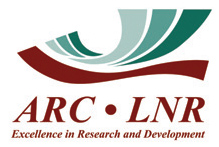
 Dr Willem Boshoff, Department of Plant Sciences, University of the Free State
Dr Willem Boshoff, Department of Plant Sciences, University of the Free StateLeaf rust, caused by the fungus Puccinia triticina (Pt), is an important disease of bread wheat in South Africa. It is frequently found in the winter rainfall wheat growing regions, resulting in localised epidemics and yield loss in some seasons.
The disease can be managed by the timely application of registered fungicides on susceptible cultivars or alternatively by growing resistant cultivars that can provide economical and environmentally friendly leaf rust control. However, durability of single gene resistance is often challenged with continual emergence of new Pt races. To reduce the threat and accompanying production risk of the continually evolving leaf rust pathogen, researchers at ARC-Small Grain and the University of the Free State have been monitoring the virulence profile of the Pt population in South Africa over the past four decades, with many races of the pathogen characterised on wheat and triticale. These studies played a crucial role in the early detection of new races which were subsequently used to identify resistance sources and determine the response of commercial cultivars and breeding lines.
As part of ongoing rust monitoring, surveys were conducted during the 2020 and 2021 seasons across the major wheat growing regions, including the Free State, KwaZulu-Natal and Western Cape. Leaf samples of wheat and triticale infected with leaf rust were collected from rust trap nurseries and commercial wheat fields and spores collected from the samples were inoculated onto seedlings of standard differential lines. Leaf rust races were identified based on their virulence pattern (comparative low and high infection types) on the differential lines.
Virulence analysis of the isolates collected during 2020 and 2021 revealed the presence of three new Pt races. Two of these new races, namely 3SA170 (MFPSJ, North American race notation) and 3SA100 (MFPSK) were first detected in 2020. Race 3SA170 was found in many samples collected from different localities in the Western Cape and Free State, whereas 3SA100 was only detected in a few samples collected from Bethlehem in the Free State. Race 3SA170 is most similar in virulence to the existing race 3SA10 first described from isolates collected during 2016. Based on tests on common differential lines, 3SA170 differs from 3SA10 being virulent (high) on resistance gene Lr1 and avirulent (low) on Lr12. Race 3SA100 differs in virulence from 3SA170 on Lr20 only (Photo 1) and from the existing race 3SA248 on Lr1 and Lr12. Both 3SA170 and 3SA100 are virulent on key resistance genes Lr24, Lr26, Lr13 and Lr37.

The potential threat of the new races to the wheat industry was assessed by evaluating the current commercial cultivars and breeding lines against the new and older races. Seedling infection type data for 113 South African wheat cultivars showed that 69 and 72 entries were susceptible to the new races 3SA100 and 3SA170, respectively, compared to the rest of the races 3SA144 (ten entries susceptible), 3SA145 and 3SA127 (52), 3SA146 (54), 3SA10 (73) and 3SA248 (78). The results further suggest that both 3SA170 and 3AA100 have increased virulence to cultivar SST 0166 (changed from a resistant to an intermediate seedling response) than the remaining races (Photo 1).
Rapid increase in frequency
Race 3SA170 appears to be dominating the leaf rust population in South Africa in just one season. The rapid increase in the frequency of 3SA170 could be due to mutations which may have resulted in this race being more virulent and fitter than older races. Moreover, the steep increase in the hectares planted with SST 0166 in the Western Cape since 2018 may have contributed to the selection for races 3SA170 and 3SA100, as this cultivar showed increased susceptibility to these two races whereas it is immune (produce resistant flecks only) to previously described Pt races.
In addition to the aforementioned two races, a few isolates collected in the Western Cape during 2021 were found to be virulent on the resistance gene Lr9. As virulence for Lr9 has not been previously reported in South Africa, these isolates were considered as representing a new race(s) and are currently being characterised further to identify effective resistance sources against them. However, evaluation of the current cultivars and breeding lines confirmed the increased susceptibility of cultivar SST 0117 to these isolates (Photo 2).

 The response of the current wheat cultivars will be updated in the 2022 production guidelines of ARC-Small Grain to reflect the influence of the new races. With the confirmation of at least three new races during 2020 and 2021, the number of new Pt races reported over the past twelve years increased to eleven. The results indicate continued variability of the Pt population in South Africa and stress the need for regular surveillance as an early warning system to report the effect of new and more virulent Pt races on cultivar response.
The response of the current wheat cultivars will be updated in the 2022 production guidelines of ARC-Small Grain to reflect the influence of the new races. With the confirmation of at least three new races during 2020 and 2021, the number of new Pt races reported over the past twelve years increased to eleven. The results indicate continued variability of the Pt population in South Africa and stress the need for regular surveillance as an early warning system to report the effect of new and more virulent Pt races on cultivar response.





























